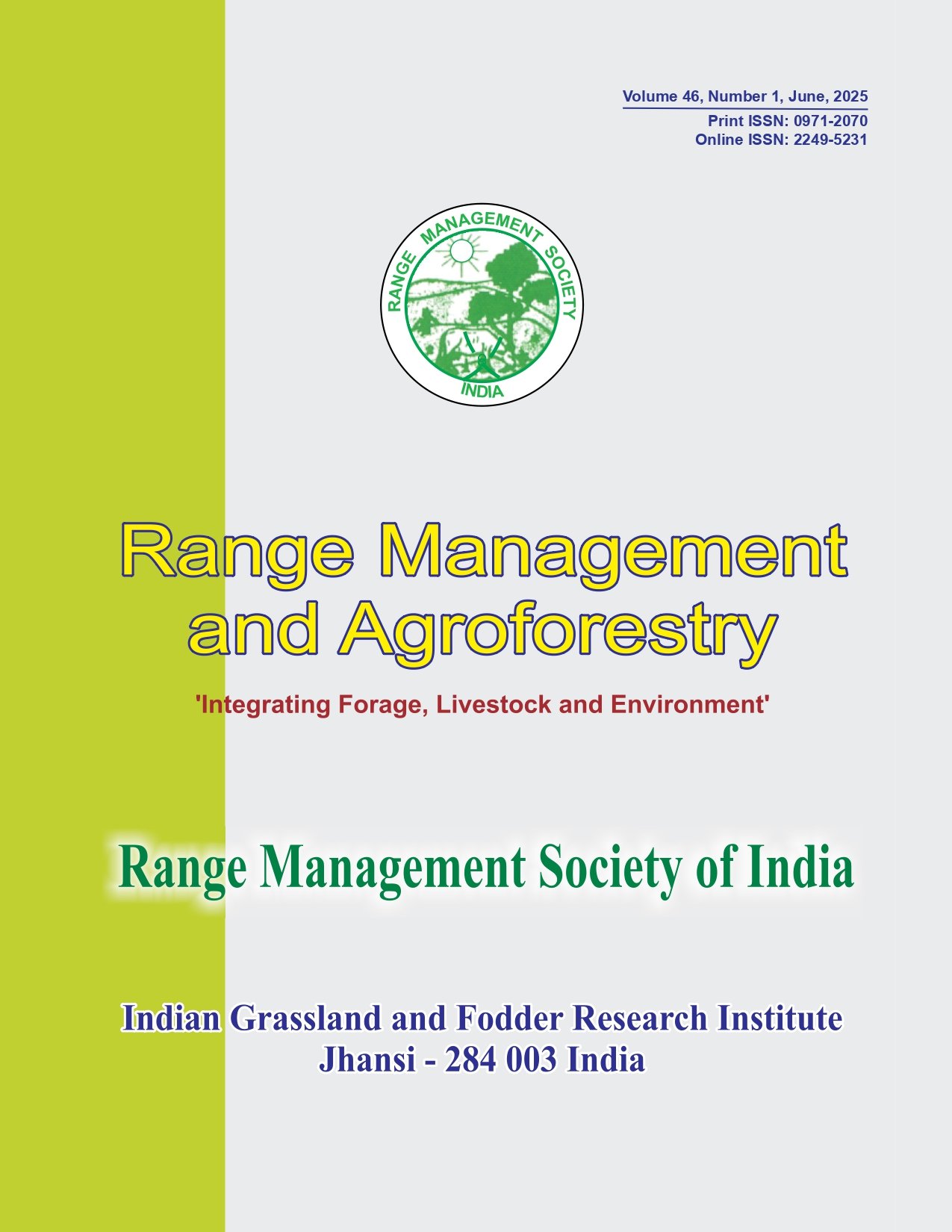Stability in performance of marvel grass genotypes (Dichanthium annulatum) under north western arid rangeland
Keywords:
Dichanthium annulatum, Fodder, G x E interaction, Genotypes, Perennial grasses, Rangeland, Selection, StabilityAbstract
The study was conducted during kharif season of 2006, 2007 and 2008 to test the stability of genotypes of marvel grass (Dichanthium annulatum). Pooled analysis of variance on five characters was carried out individually as well as pooled over the years. Genotype x environment interaction was significant for all the characters included in the study. Significant G x E (linear) for all the characters indicated presence of substantial amount of predictable G x E interaction. All seven genotypes were tested for three stability parameters, viz, mean, bi and S2 di. It indicated that direct selection for plant height and green fodder yield along with simultaneously selection for tillers per plant will be responsive for improvement of dry fodder yield and seed yield per plant. The results provide useful information to aid the choice of marvel grass genotypes in north western arid area of Gujarat. CAZRI-BH-DA-3 and CAZRIBH-DA-2 should be included in any breeding programme where objective is to develop high-yielding stable genotype over the environment.




